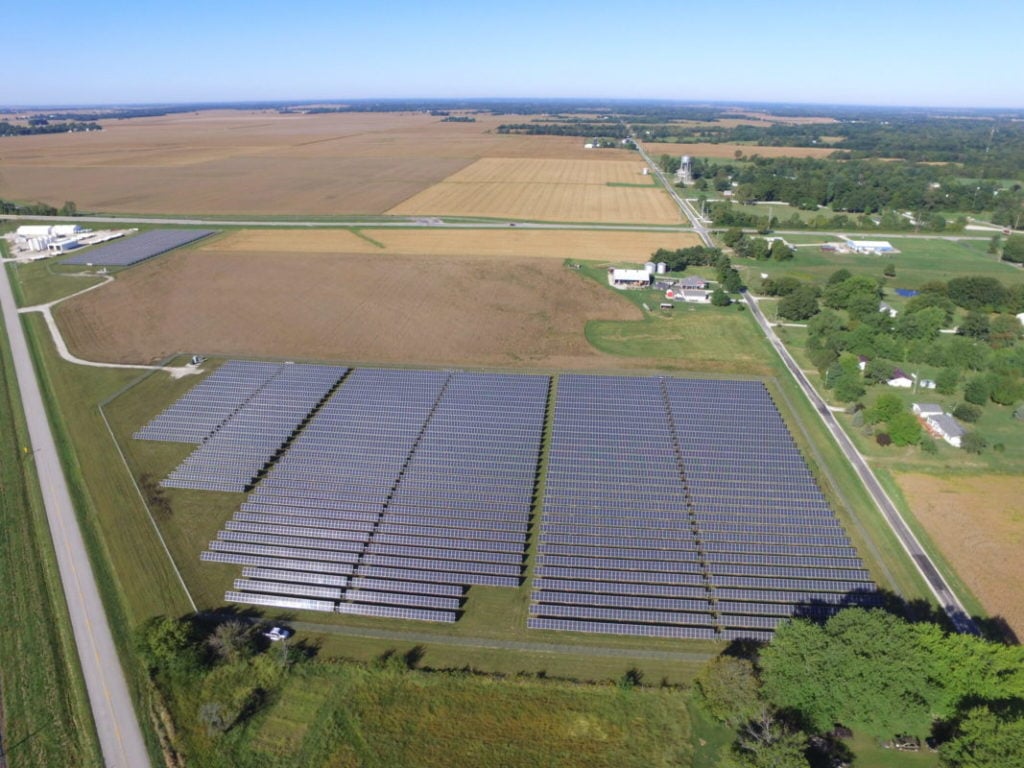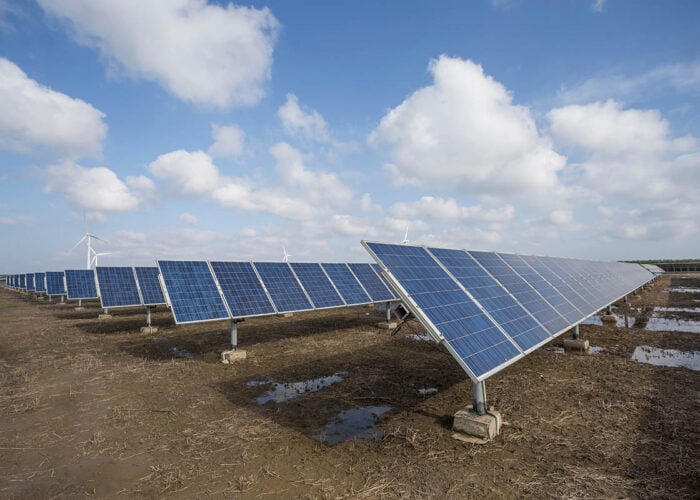
Meeting the world’s changing energy needs will require a number of prerequisites, including technological innovation, political will and, perhaps most crucially of all, financial investment. The International Energy Agency (IEA) reports that, in 2023, developers will invest US$380 billion into the global solar sector, the first time investment in solar would exceed investment in oil, and this scale of investment will be necessary to meet some of the capacity addition targets considered vital to meet the world’s clean energy goals.
SolarPower Europe, the trade body representing the sector on the continent, for instance, expects the world to add 341GW of new capacity in 2023 alone, and building out all aspects of this infrastructure – from solar modules and trackers to grid infrastructure and storage components – will require not only vast sums of money, but a diverse range of investors, and effective financial arrangements to minimise risk and maximise productivity.
Unlock unlimited access for 12 whole months of distinctive global analysis
Photovoltaics International is now included.
- Regular insight and analysis of the industry’s biggest developments
- In-depth interviews with the industry’s leading figures
- Unlimited digital access to the PV Tech Power journal catalogue
- Unlimited digital access to the Photovoltaics International journal catalogue
- Access to more than 1,000 technical papers
- Discounts on Solar Media’s portfolio of events, in-person and virtual
One company that has sought to expand its means of fundraising is Summit Ridge Energy (SRE), a US developer that has worked predominantly in the community solar sector, and earlier this year, closed a deal with Japanese financier MUFG to secure US$275 million in additional funding for 15 community solar projects each in the US states of Illinois and Virginia.
SRE’s work has also been influenced by the Inflation Reduction Act (IRA) in the US, the landmark piece of legislation to encourage greater domestic investment in the renewable supply chain. The company’s reliance on both favourable investment conditions created by the IRA, and direct financial support from a foreign investor, effectively demonstrates the potential of these diverse, multi-faceted solar funding frameworks, and could help set a precedent for new investment decisions in the sector.
Working with MUFG
MUFG’s latest fundraising effort is not the first such arrangement between the financier and SRE, with the two firms agreeing to the creation of a US$100 million funding facility in 2022, on which the latest agreement has built.
“We closed a permanent debt commitment with MUFG at the end of 2022, and that was really the start of the relationship,” says Brian Dunn, co-founder and chief operating officer at SRE. “Since then, we’ve expanded the relationship and the overall capital commitment with MUFG, and in their New York-based team, and we’ve really grown that relationship and built up, [what] I would say [is] a very strong track record across both companies at this point.”
The funding is a necessary component of SRE’s plans to expand its community solar portfolios, with the company planning to add 75MW of new capacity to its Virginia projects, alongside 45MW of new capacity to its Illinois portfolio, in 2024 alone. Many of the recent capacity additions in the US solar sector have been supported by the IRA, with the Solar Energy Industries Association (SEIA) estimating that the solar and storage sectors had added US$100 billion to the US economy since the passing of the IRA, but there is also evidence that domestic support for new US solar could be slowing down.
The SEIA’s own figures point to a plateauing of capacity additions in the US community solar sector in particular. While the trade body insists that there remains “considerable momentum” for new community solar projects, the sector added 226MW of new capacity in the third quarter of this year, the same figure as the second quarter, and 16% less than in the second quarter of 2022.
As a result, the involvement of a foreign financier could help stimulate growth in a sector where domestic interest, at least from a funding perspective, could be slowing down.
“It’s really going to be deployed to build out our fleets in Virginia and Illinois,” says Dunn, “taking the project from what we call NTP (notice to proceed) to mobilising the projects, getting the crews on site, getting equipment on site and taking those projects all the way through to completion.”
A range of investors
Dunn was also eager to point out that SRE has continued to attract additional investment, from a range of sources, suggesting that a diverse range of backers is an effective way of continually funding new solar developments. He said that the company has deployed US$1.6 billion of capital across its operations, and has raised, but not yet deployed, a further US$1 billion of capital in 2023 alone.
“In terms of the overall amount that we raised at SRE, we’ve been able to not only maintain our previous levels of fundraising, but really accelerate in this environment, which is quite unique in the broader infrastructure and renewable asset classes,” Dunn adds.
The company’s eagerness to use a range of investors mirrors the solar sector more broadly, with a greater range of companies now involved in the industry. With more companies and industries eager to power their operations with clean power, an increasing number of companies are looking to sign offtake agreements with solar producers, or invest directly in solar farms, with organisations such as the UK’s Network Rail increasingly reliant on power purchase agreements to meet its decarbonisation goals.
“We maintain a number of different lenders in our universe for a variety of reasons,” adds Dunn, explaining some of the differences between the range of investors SRE has worked with. “Not every lender is going to be a perfect fit for every project.”
“We have non-bank lenders in our universe, we have large banks and regional banks that we work with, [and] that’s for a couple of reasons. One is to find the right bank for the right project, but to also make sure that we always have options in the market; you can never be reliant on just one capital provider or just one EPC contractor or just one operations and maintenance provider. It’s always good to diversify your partners, your capital providers [and] supply chain companies.”
He went on to explain that non-bank lenders tend to be interested in funding projects in late-stage development, whereas larger banks, such as MUFG, are more interested in funding “shovel-ready” projects. For a company with a number of projects in its pipeline, at a range of stages of development, this breadth of investors is of particular benefit for SRE.
Personal relations and legislative support
Of course, the addition of a greater range of investors and decision-makers in the solar sector means that ensuring amicable and productive relationships with these firms is more important than ever.
“It’s of the utmost importance these days in the capital markets,” says Dunn, discussing how SRE has sought to leave a good impression on new investors. “We’re known for our ability to execute, our transparency in our ability to really live up to our commitment, and in our word. Our lenders and our capital providers, and our co-development partners, they recognise that.”
Dunn also stressed that changes in the legislative environment in which SRE is operating, namely through the passage of the IRA, has created more moving parts for the company’s leadership to manage.
“The IRA has done a number of positive things for the US in the broader renewable energy environment, first and foremost by maintaining a stable level of the investment tax credit (ITC) and offering ITC adders,” says Dunn, remaining optimistic that this disruption has created more opportunities than challenges.
“We’re seeing new markets become viable, we’re seeing new projects become viable, that otherwise weren’t able to move forward, [and] we’re seeing clean energy access being expanded for low- to moderate-income customers.”
Indeed, the SEIA called the ITC, a 30% tax credit for individuals who install solar panels on residential properties that was implemented in 2006, “one of the most important federal policy mechanisms to incentivise clean energy in the US.”
However, others in the solar sector have been less enthusiastic about the role of the US legislation, namely with regard to reducing the price of US-made products so they are competitive with components made overseas. In July, Sagar Chopra, a senior research analyst at Wood Mackenzie, told PV Tech Premium that the ITC adders in particular are an attractive proposition, but questions remain as to whether this will make it more financially viable for US solar companies to source domestically-made components.
Regardless, Dunn stressed that some level of government support is necessary for any energy project to grow in the US, and solar is no exception.
“Whether it’s renewable energy or fossil fuel-driven energy, government incentives and support are a reality of the entire energy industry in the in the US,” says Dunn. “When the IRA stabilised the ITC at 30% that allowed us to continue to develop many projects across the US, but within the context of this MUFG portfolio in Illinois and Virginia, there are several projects there that may not have been able to move forward had it not been for the for the IRA.”
A challenging market
The influence of external factors, such as overseas investors and new legislation, in the permitting and financing of solar projects, could also shift power away from solar developers and towards these other bodies. If the support of a bank, or compliance with a new law, is a prerequisite for a new project to get off the ground, compliance with these conditions could prove more influential over a project’s ultimate direction than the intentions of the developer.
Dunn calls this shifting balance of power a “good question”, acknowledging the challenges that can arise from more multi-faceted compliance and financial processes, and noted that falling module prices around the world have posed a number of challenges for solar developers.
Last week, China’s Three Gorges Group reported that the bidding prices for n-type modules was “consistently” falling below RMB1/W (US$0.14/W), while a “toxic inventory” of modules has built up in Europe, with module supply far exceeding demand, and driving the prices of panels down to the point where manufacturers are struggling to turn a profit, disrupting the entire solar supply chain.
“It really shouldn’t come as a surprise to anybody that it’s been a challenging market for, I’d say, all sections of the infrastructure asset class, including renewable energy, as interest rates have risen,” says Dunn. “Big picture, interest rates have gone up [and] the environment has been more challenging, but we’ve been able to really differentiate ourselves in the sense that raising capital has been a big key execution focus of ours.”
For SRE, however, the company’s commitment to its fundraising activities has helped it avoid some of these financial consequences, and with the legislative and financial backdrop of solar projects set to become more complex than ever, such approaches could prove useful in the long-term.
“One thing that we’ve done to really buck the trend here at SRE, and to really continue our growth, is we’ve been successful across all aspects of the capital stack in terms of new capital formation,” said Dunn. “Not just the construction debt and the term debt, but tax equity, joint venture equity, our joint venture partners, development debt and, of course, really growing our own balance sheet over the course of 2023.”







